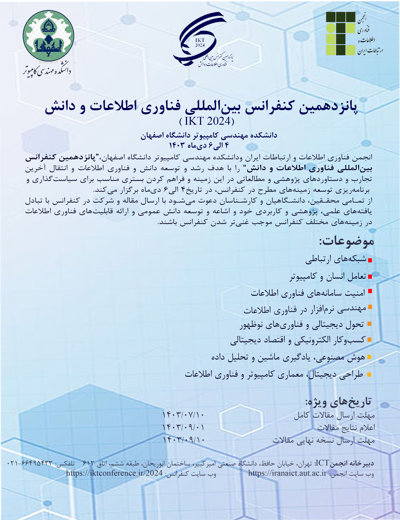0% Complete
Authors :
Keywords :
Abstract :
List of archived papers
مهدی موسی وند - دکتر پیام محمودی نصر مهدی موسی وند - پیام محمودی نصر -
علی روحانی فر - کمال میرزایی بدرآبادی
Sadegh Balouch - Omid mehdi Ebadati
Masoud Alizadeh - Mohammad Soleymannejad - Behzad Moshiri
Arash Ebrahimnezhad - Faria Nassiri-Mofakham
سعیده کبیری راد
Mehran Safari Dehnavi - Vahid Safari Dehnavi - Dr Masoud Shafiee
Mohammad Bahrami - Seyyed Amir Asghari - Mohammadreza Binesh Marvasti - Sajjad Ansaria
Ali Forghani Elah Abadi - Seyedeh Elham Asghari - Sepideh Sharifani - Seyyed Amir Asghari - Mohammadreza Binesh Marvasti



